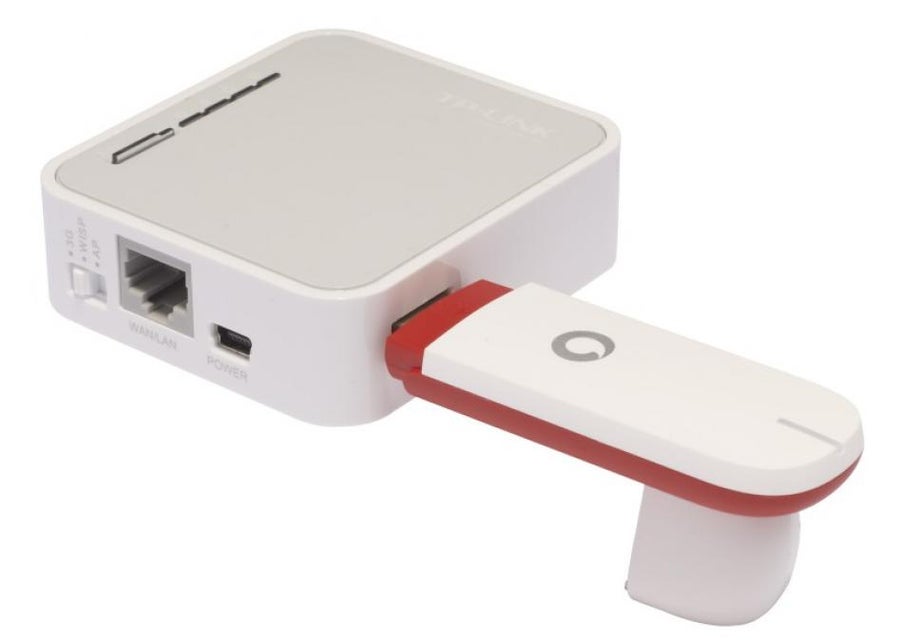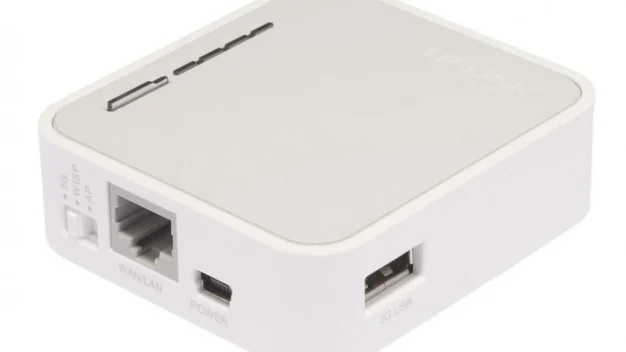TP-Link TL-MR3020 review
A great travel router that’s let down by its inability to recognise some 3G modems
The TP-Link MR3020 is a compact 3G router that lets you share your wireless 3G dongle with more than one Wi-Fi-enabled device. You can also share a cable or ADSL modem’s connection via the router’s Ethernet port, use it as a Wi-Fi bridge to connect a wired Ethernet device to your wireless network, or use it as a wireless repeater for another router. You set different networking modes via the MR3020’s built-in web-based interface or the slider switch on the side of the unit, depending on the mode you need. Thankfully, a quick setup wizard guides you through the process of configuring the MR3020 for each mode.

The MR3020 is packed with features that we take for granted on regular household routers but wouldn’t necessarily expect on a compact travel router; there’s a DMZ and port forwarding, a configurable firewall, user-selectable Wi-Fi modes and a range of wireless security modes including WPA2. The MR3020 has an uncluttered and well-designed web interface and each option is explained in a helpful information pane to the right of the screen. Altering settings on the MR3020’s web interface is always easy, even when you’re viewing it on the screen of a smartphone.
The MR3020 isn’t intended to be used over a wide area and this is borne out by our test figures, which showed a very respectable 41.3Mbit/s transfer speed at a range of one metre and a lowly 4.5Mbit/s at 10 metres. In comparison, the Go baby mobile Dongle Dock portable router provided 16.9Mbit/s at one metre and 8.9Mbit/s at 10 metres, which means that the MR3020 is the better option if your Wi-Fi users are going to be relatively close to the unit, as they would be in a hotel room. Neither unit passed our 25 metre test, which is unsurprising considering their small size and integrated antennae.

Sadly, we had trouble getting the MR3020 to recognise certain 3G dongles, such as Vodafone’s K3770 (manufactured by Huawei Technologies). It did recognise two Three-branded devices, but was only truly happy with the Huawei E367 (Three’s Premium HSPA+ dongle). It recognised the Huawei E1750 at first, but then changed its mind, which started the 60-second recognition process again. This is disappointing, because according to TP-Link’s website it should work with all three. Even though the K3770 isn’t meant to work out of the box, you can download a modem settings file from TP-Link’s website and upload it to the MR3020 travel router, but doing this didn’t help.
This is a shame, as otherwise the MR3020 is a fine travel router. It’s cheaper and smaller than the Go baby mobile Dongle Dock, but seems to be more fussy about which dongle it will work with. Make sure you check carefully online to see other users’ experiences with 3G dongles before you buy.
Basic Specifications | |
|---|---|
| Rating | *** |
| Modem type | none |
| 802.11b support | yes |
| 802.11g support | yes |
| Draft 802.11n support | yes |
| Draft 802.11n 5GHz support | no |
| MIMO | yes |
| Turbo mode | none |
| Stated speed | 150Mbit/s |
Security | |
| WPA | PSK (TKIP) |
| WPA2 | yes |
| Firewall | yes |
| MAC address filtering | yes |
| DMZ | yes |
Physical | |
| Size | 22x74x67mm |
| Antennas | 1 |
| Internal/external antennas | internal |
| Upgradeable antenna | no |
| Number of WAN ports | 1 |
| Ethernet ports | 1 |
| Ethernet connection speed | 10/100 |
| Other ports | micro-USB |
| Wall mountable | no |
| Power consumption on | 1W |
Other Features | |
| Dynamic DNS | yes |
| Universal Plug and Play support | yes |
| DHCP server | yes |
| MAC spoofing | yes |
| Port forwarding | yes |
| WDS Support | yes |
| USB device support | yes |
| QoS | yes |
Buying Information | |
| Price | £29 |
| Warranty | three years |
| Supplier | http://www.pixmania.co.uk |
| Details | www.tp-link.com |










